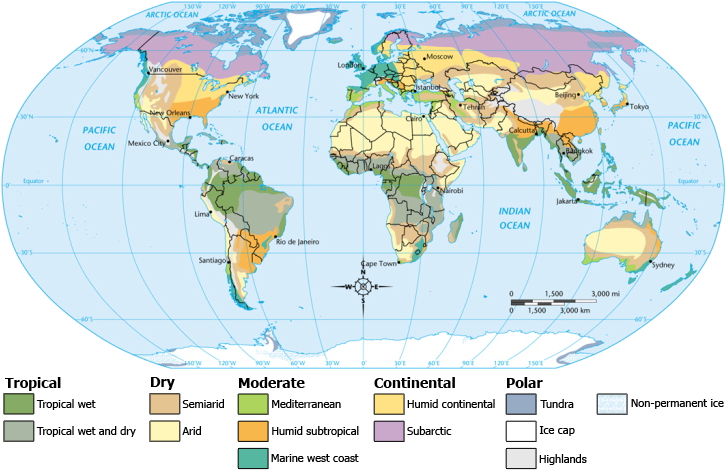Average weather over a time period, usually 30 years.
The climate is very complex. It includes temperature, rainfall, wind, evapotranspiration, ocean currents and many other factors. These factors are all influenced by sunlight.
The factors that influence climate are studied in climatology.
Usually climate is divided into different categories, depending on the actual weather in a specific region. The Köppen Climate Classification System is the most widely used system for classifying the world's climates.
The Köppen system recognizes five major climatic types. Starting from equator and mowing north and south these are: Tropical Moist Climates, Dry Climates, Moist Mid-latitude Climates, Moist Mid-Latitude Climates, and Polar Climates.
Climate exhibits seasonal cyclical patterns that are relatively stable, although climate change may disturb these patterns.
Climate naturally varies over long time spans. The variation in climate is simply called climate change.
Recently, the human population has grown dramatically and human technology has advanced a lot. This development has accelerated since industrialization. There is now evidence that human activity is a significant factor in climate change.
Changes in the amount of atmospheric greenhouse gases determine the amount of solar energy retained by the planet, leading to global warming or global cooling. It is this climatic factor that human activity is believed to affect, since humans release vast amounts of greenhouse gases from the use of fossil fuels.
Powerful computers are used to run mathematical simulations or models of climate. This is called a climate model. These can help predict future climate.
